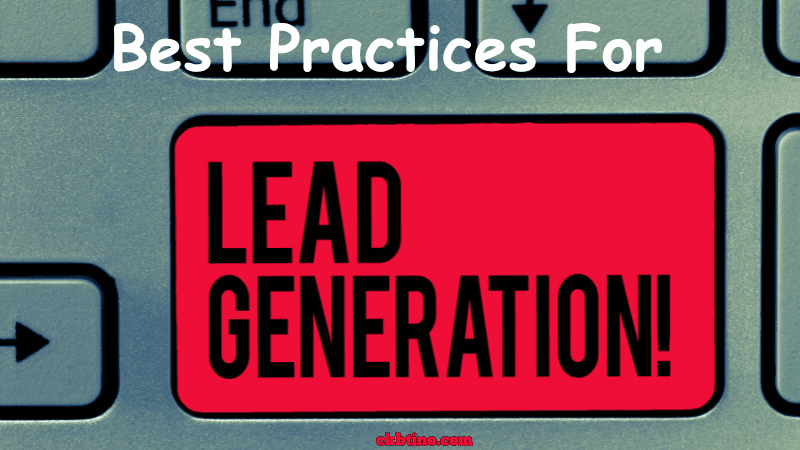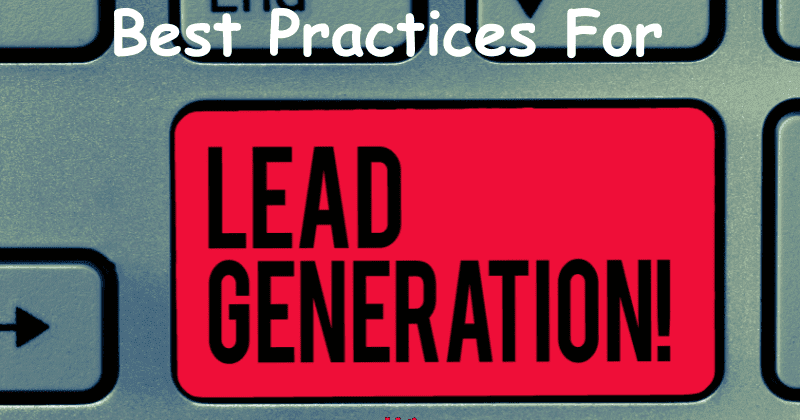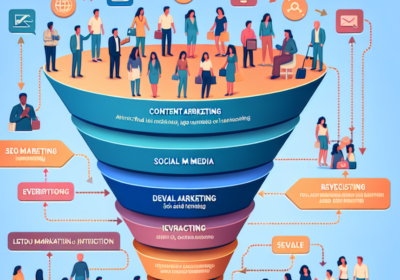Best Practices For Lead Generation In Marketing
In “Best Practices For Lead Generation In Marketing,” we delve into the strategic methodologies and innovative approaches that drive successful lead generation in the contemporary marketing landscape.
Addressing key principles such as audience segmentation, optimized content marketing, and data-driven decision making.
This exhaustive guide equips marketing professionals with actionable insights to enhance lead acquisition efforts.
Through comprehensive analysis and real-world examples, we outline the steps necessary to cultivate a robust lead generation pipeline.
Ultimately propelling our marketing initiatives toward measurable success.
This article serves as an essential resource for those seeking to refine their lead generation tactics and achieve sustained competitive advantage.
Have you ever wondered what it takes to successfully generate and nurture leads in the competitive world of marketing?
As marketing professionals, we know that lead generation is the cornerstone of our efforts to create a sustainable pipeline of potential customers.
While the concept might seem straightforward, executing it effectively involves a complex mix of strategy, creativity, and data-driven decisions.
Best Practices For Lead Generation In Marketing Video
Best Practices For Lead Generation In Marketing: Understanding Lead Generation
Lead generation is the process of attracting and converting strangers and prospects into someone interested in your company’s product or service.
It predominantly involves utilizing digital channels to identify and cultivate potential customers, ensuring that we can reach the right audience at the right time.
The Significance of Quality Leads
Generating leads is only half the battle; the quality of these leads is paramount.
High-quality leads are more likely to convert into paying customers, therefore maximizing our marketing efforts.
Focusing on quality ensures that our sales team spends their time and resources efficiently, ultimately resulting in a higher return on investment (ROI).
Identifying Target Audiences
To generate quality leads, we need to understand our target audience comprehensively.
This involves creating detailed buyer personas that encompass demographics, behavior patterns, motivations, and goals.
Best Practices For Lead Generation In Marketing: Example of Buyer Persona
Here is a simplified example:
| Aspect | Details |
|---|---|
| Name | Marketing Mary |
| Age | 35 |
| Occupation | Marketing Manager |
| Goals | Increase brand visibility, generate quality leads |
| Challenges | Tight budget, needs to show ROI |
| Preferred Channels | LinkedIn, Email, Webinars |

Key Strategies For Effective Lead Generation
There are several tactics we can implement to improve our lead generation efforts.
Here’s how we can leverage content marketing, email campaigns, social media, and SEO to boost our efforts.
Content Marketing
This specific type of marketing involves creating and distributing valuable, relevant, and consistent content to attract and retain a clearly defined audience.
Effective content has the power to nurture leads by addressing their pain points and positioning our company as a trusted resource.
Creating Valuable Content
We should focus on developing different types of content that resonate with our audience:
- Blogs: Writing informative blog posts that address common industry questions.
- Whitepapers: Providing in-depth reports on industry topics.
- Case Studies: Demonstrating success stories and client transformations.
- Webinars: Hosting live online sessions that offer direct engagement.
Email Campaigns
Marketing through email remains one of the most powerful channels for lead generation.
It allows us to directly communicate with prospects and nurture them through the sales funnel.
Building Effective Email Lists
An effective email campaign starts with a high-quality list.
We can build this list by offering valuable content such as eBooks or access to webinars in exchange for contact information.
Segmentation and Personalization
Personalization and segmentation are key to making our email campaigns more relevant:
| Personalization Tactic | Benefit |
|---|---|
| Use of Recipient’s Name | Makes the email more personal and engaging |
| Segmenting by Behavior | Sends targeted content based on user actions |
| Dynamic Content | Tailors the message to different segments |
| Timing Optimization | Sends emails at times when engagement is higher |
Social Media Marketing
These platforms are powerful tools for generating leads.
They enable us to reach a broader audience, engage with followers, and create communities centered around our brand.
Choosing the Right Platforms
Different social media platforms cater to different audiences.
We should select platforms that align with our audience’s preferences:
- LinkedIn: Excellent for B2B lead generation and professional networking.
- Facebook: Offers extensive advertising capabilities and community growth.
- Twitter: Supports real-time engagement and brand building.
- Instagram: Ideal for brands with strong visual content.
Search Engine Optimization (SEO)
SEO involves optimizing our online content so that search engines are more likely to show it as a top result for relevant queries.
Effective SEO can significantly enhance our lead generation efforts by increasing organic traffic.
On-Page SEO
SEO done on-page includes elements we control on our website:
- Title Tags: Include primary keywords to improve visibility.
- Meta Descriptions: Summarize the content to entice clicks.
- Header Tags (H1, H2, etc.): Use clear, keyword-rich headings.
- Alt Text for Images: Describe images to enhance SEO and accessibility.
Off-Page SEO
This type of SEO focuses on activities outside our website:
- Backlinks: Earn links from reputable websites to boost authority.
- Social Signals: Leverage social media engagement as a ranking factor.

Nurturing Leads Through The Sales Funnel
Once we have generated leads, nurturing them is essential to guide them through the sales funnel.
This involves ongoing engagement and relationship-building to convert prospects into paying customers.
The Buyer’s Journey
Understanding the buyer’s journey helps us tailor our efforts to each stage:
| Buyer’s Stage | Buyer’s Actions | Our Actions |
|---|---|---|
| Awareness Stage | Identifying a problem or opportunity | Provide educational content to inform |
| Consideration Stage | Researching solutions to the problem | Offer comparison guides and in-depth analyses |
| Decision Stage | Deciding on the best solution | Present case studies, testimonials, and free trials |
Implementing Lead Scoring
Lead scoring is a method of ranking prospects against a scale to judge their value to the organization.
Scoring helps prioritize leads, enabling a more focused approach.
Criteria for Lead Scoring
Common criteria include:
- Demographics: Age, job title, industry
- Behavioral Data: Website visits, email opens, downloads
- Engagement Level: Interaction with marketing materials, social media engagement
Leveraging Technology and Tools
In the modern digital age, several tools and technologies can streamline and enhance our lead generation efforts.
Customer Relationship Management (CRM) Systems
CRMs help manage interactions with current and potential customers. They store data, track interactions, and automate processes, vastly improving efficiency.
Best Practices For Lead Generation In Marketing: Marketing Automation Tools
These tools automate repetitive tasks such as email campaigns, social media posting, and ad campaigns.
They save time and ensure our marketing efforts remain consistent and timely.
| Popular Tools | Functionality |
|---|---|
| HubSpot | Inbound marketing, CRM, and sales software |
| Marketo | Marketing automation software |
| Salesforce | Comprehensive CRM solution |
| Mailchimp | Email marketing and automation platform |
Analytics and Reporting Tools
Tools for analytics allow us to measure the effectiveness of our campaigns and make data-driven decisions.
| Tool | Description |
|---|---|
| Google Analytics | Tracks website traffic and user behavior |
| SEMrush | Provides SEO and competitive analysis |
| Hootsuite Analytics | Monitors social media performance |
| Databox | Aggregates data from multiple sources into dashboards |
Best Practices For Lead Generation In Marketing: Measuring and Optimizing ROI
To ensure our lead generation strategies are successful, we need to constantly measure and optimize our ROI.
Continuous improvement is achieved through regular analysis and adjustments.
Key Performance Indicators (KPIs)
Identifying and tracking KPIs helps measure the success of our campaigns.
| KPI | Description |
|---|---|
| Conversion Rate | Percentage of leads that become customers |
| Cost Per Lead (CPL) | Average cost to acquire a single lead |
| Lead to Customer Ratio | Number of leads required to gain one customer |
| Customer Lifetime Value | Total revenue expected from a customer over their duration |
A/B Testing
Running A/B tests on various elements of our campaigns can reveal what works best.
Elements to Test
- Email Subject Lines: Find out which ones get more opens.
- Call-to-Action (CTA) Buttons: Determine which design or text gets more clicks.
- Landing Pages: Compare different layouts and content to see which converts better.

Best Practices For Lead Generation In Marketing Conclusion
Lead generation is a multifaceted process that forms the backbone of any successful marketing strategy.
By understanding our target audience, leveraging powerful tactics like content marketing, email campaigns, social media, and SEO.
And also using advanced tools and technology, we can not only generate high-quality leads but also nurture and convert them efficiently.
Ultimately, the best practices for lead generation in marketing revolve around a well-rounded approach that combines creativity with data-driven insights.
Regularly measuring and optimizing our strategies ensures that we stay ahead in an ever-evolving marketplace.
With these practices in place, we are well-equipped to build a robust and sustainable pipeline of potential customers.





